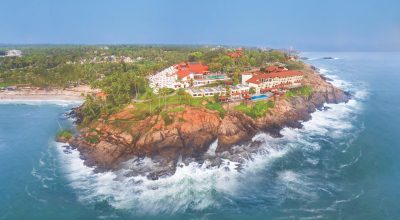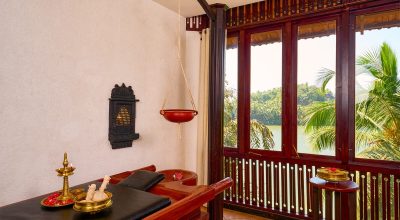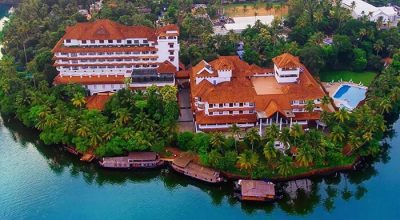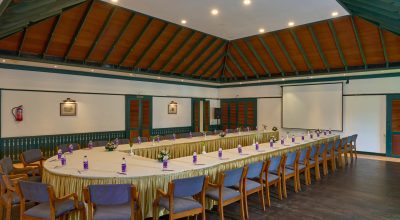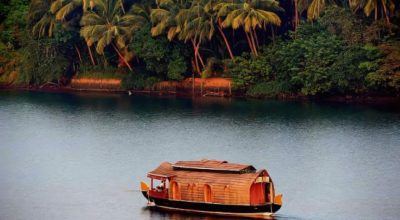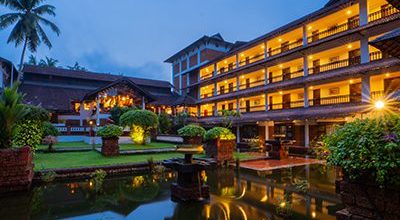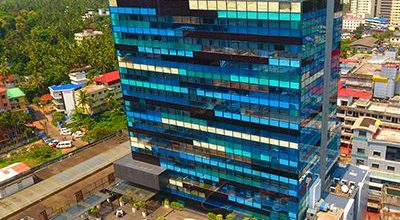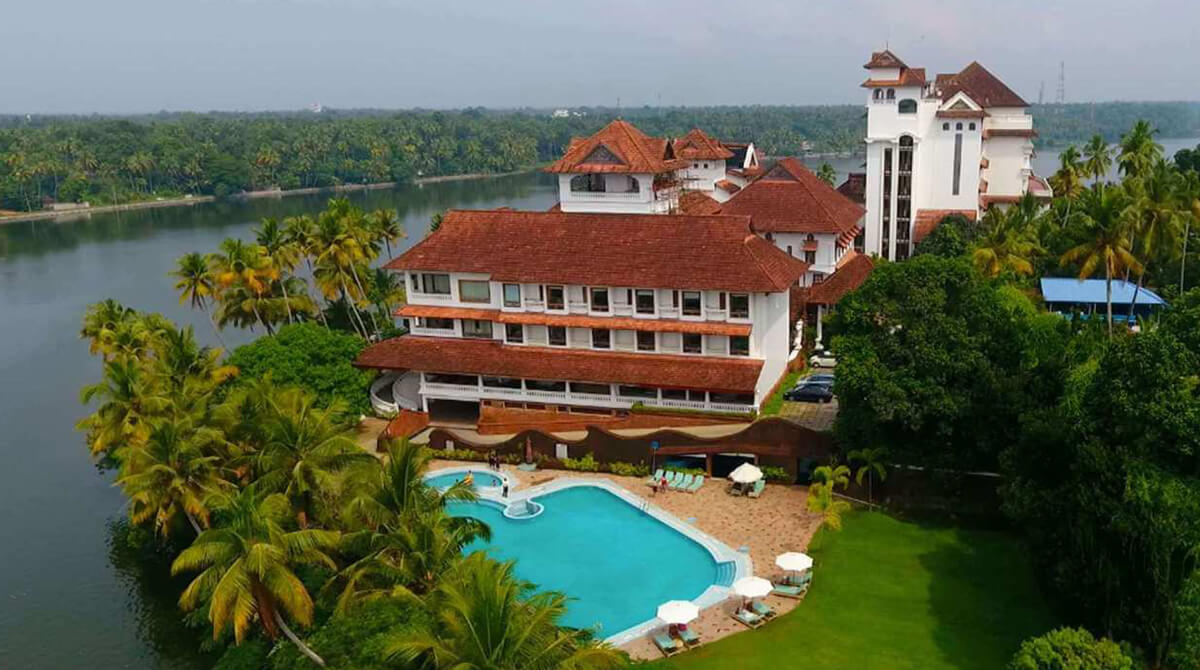Kollam is the city to aim for if you are planning to visit Ashtamudi. The Ashtamudi Lake and its famous backwater cruises are what comes to mind first whenever we think of Ashtamudi. It’s the most visited backwaters with tourists thronging in, in their thousands, every year, both domestic as well as from overseas. The lake has eight tributaries feeding it, hence its local name of ‘eight-coned’. Its scenic environment, amazing swaying palm groves, beautiful birds and fluttering butterflies and serene waters make for an unforgettable experience and much favored by honeymooners.
It’s easy to reach by both road, rail as well as by air. The Trivandrum Airport is just about 70 miles south of Kollam. Numerous accommodations exist in this city to suit all pocket sizes. The Raviz hotel is located on the banks of the lake and makes for a wonderful stay in Kollam.
Once, mangroves flourished in the brackish waters, but are now facing extinction due to the pollution and commercial activities on this most beautiful of lakes. The surrounding coconut trees are predominant all over Kerala and help in boosting its economy. Most of Kerala has the same kind of flora, consisting of wet evergreen rainforests in the lower plains and deciduous and semi-evergreen forests in the east. The weather throughout Kerala is humid and the differences in the terrains from the Western Ghats to the flat lands in the west have led to significant biodiversity. Kerala’s forests are home to more than 1,000 different species of trees, with the timber trees being of significant commercial value.
Kerala state comprises of a small trip of land lying between the Arabian Sea and the Western Ghats in the south-western tip of India. Being closer to the equator line as compared to other Indian states, Kerala has a comparatively pleasant climate with temperatures ranging from 28 to 32 degrees in the plains and about 20 degrees in the cool hills. The panoramic hills covered with verdant green plantations offer a cool getaway during the summers.
The forest cover of Kerala is mainly spread over the hilly Western Ghats and tends to dwindle as they get to the plains. The types of trees growing around Ashtamudi also vary from those on the bordering hills. Majority of the 44 rivers of Kerala originate in the Western Ghats and drain into lakes, backwaters and estuaries. This tiny state of Kerala is thus blessed with abundant water resources that enrich its biodiversity.
Some of the tropical trees found in and around Ashtamudi include the Teak, Rose Wood, White Pine, Coconut, Jackfruit, Mango and the Golden Shower Tree. Let us take a look at some of them.
Also known as Cassia Fistula, the Golden Shower Tree blooms in summer with thick clusters of bright yellow flowers, which cover the entire branches of the tree. These flowers have been given the distinction of being designated as the Kerala State flower. Interestingly, the flesh of its fruit can be used as a laxative while the bark can be used to treat skin infections.
The Teak tree can reach heights of up to 30 meters and is a tall ever-green tree with yellowish to reddish-brown wood. The bark is off white in color while the leaves are wide and large and pale green in color. Aside from the wood being valuable for furniture purposes, the teak also has medicinal values for stomach-related issues.
The Indian Rosewood has nothing to do with the rose flower and more to do with the high value of its golden to light brown colored wood. This is an erect deciduous tree and its precious oil is helpful in stimulation in new tissue generation and reduction of lines and wrinkles. It’s also been proved to be very effective in acne treatment. Most valuable for the ladies!
The White Pine is another tree found growing around Ashtamudi, and as suggested by its name, it grows to about 50-100 feet in a pyramid shape. Pine groves are a beauty to stroll in.
The White Cedar is a small, hardy slow-growing tree that can sometimes live up to 200 years or more! Its leaves are small and scaly and the bark is thin and shiny when tree is young. Its oil is traditionally used for curing scabies and leprosy.
The Jack Wood tree is known as the common man’s tree and bears the amazingly large jackfruits that can be used for cooking when unripe and eaten raw as a fruit, when ripe. The fruits can also be used to prepare puddings, baby food as well as jams and jellies. Its wood is commonly used for furniture making and construction.
The Ranphannas tree, also known as the Anjili locally, is a big tree that grows up to 30-40 meters high and has fruits that look similar to the jackfruit, but much smaller in size. Its wood is useful for boat building and furniture making.
The Peepal tree is worshiped all over India by the Hindus and it can be traced back to the Indus Valley Civilization (3000-1700 BC). This historical tree can even grow on top of other trees or buildings. Its leaves are effective in controlling palpitations and cardiac weakness.
The Banyan tree holds the prestige of being the Indian National tree. A single Banyan tree can cover several acres of land with its numerous roots that eventually become a huge tangle of branches, roots, and trunks. The bark is useful in paper and rope production.
The Indian-origin Sandalwood tree is a medium sized tree that takes 65-75 years to mature when its heartwood has the highest amounts of oil. The precious and fragrant oil starts to develop in the root and heartwood after about 15-20 years and is used for rituals. The highly aromatic wood is used for making perfumes and very expensive furniture! The oil has a very calming and soothing effect and helps in bringing down fevers and excessive sweating.
There are many other trees including the Devil tree, the Poison nut tree and the West Indian Medlar tree as well as the Black Plum or Indian Cherry tree. The latter’s wood is very strong and used in the construction of railway tracks, building as well as furniture making.
For those interested in the flora of different places, Ashtamudi and its surroundings are a paradise with all its exotic flowers and plant life. A trip to this lake area can take you on a trip of a great adventure as there is so much to be seen and learnt here. Memories become a blur with the vastness of this place. But don’t take it for granted, plan a trip and see for yourself!

